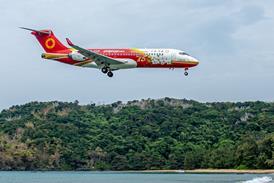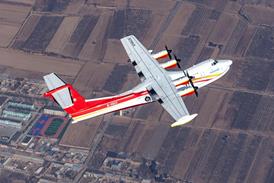PETER LA FRANCHI / BRISBANE
Australia's Defence Science and Technology Organisation (DSTO) has built an experimental reusable high-power radio frequency weapon withan impact zone of20-30m (65-100ft) as part of ongoing research into electromagnetic-pulse armaments able to destroy electrical and electronic systems.
The weapon uses a combined battery and capacitor array to provide a direct pulse energy source attached to a pulse conditioning system and antenna array. The conversion of stored energy into a conditioned RF signal in the 3GHz range is described as taking less than 1ns.
A photograph of weapon components displayed by the DSTO at the Australian Army's Land Warfare Conference in Brisbane last week showed a form of dipole antenna array on either side of a cylindrical RF pulse-conditioning unit.
The same display included a photograph of a 2.5m-diameter impulse radiating antenna. DSTO officials say that the antenna is part of a US reusable RF weapon development that is demonstrating1.7-2kV/m output at ranges of 2km (1.2 miles) the DSTO's programme includes reusable and single-use devices.
The display included a Raytheon diagram showing an airborne high-power reusable RF energy weapon carried by a Lockheed Martin C-130. The array was fitted to the fuselage ahead of the port wing. DSTO officials say Raytheon plans to fly a prototype on a C-130 within five years.
A paper released by the DSTO reveals that state-of-the-art high-power RF devices should be able to demonstrate "effects generated in targets at ranges of 100-200m". Development of practical weapon systems "with a range closer to the 1km mark will depend on developments in compact pulsed power systems and high-gain antenna techniques", the DSTO says.
The paper also indicates that the DSTO has problems developing switches to handle the rapid RF power rise before firing. Spark-gap switching tends to limit the output, but photo conductive semiconductors or similar solid-state devices "give the promise for high-powered arrays operating at pulse repetition rates well above the 1kHz range", it says.
The DSTO says that it is seeking to develop an indigenous capability which will enable Australia to work with the UK and USA on more advanced weapons.
Source: Flight International










































